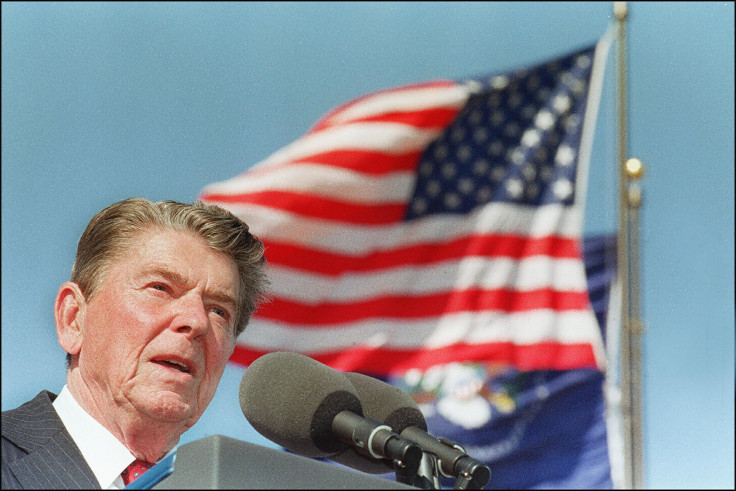
Ronald Reagan will be on everyone’s mind as Republican candidates head to The Great Communicator’s presidential library in Simi Valley for the second GOP primary debate. The Hispanic vote might also be on people’s ming. It’s Hispanic Heritage month and Reagan was one of the first presidential candidates to take the Latino vote seriously. How much will Hispanics be honored and recognized in the Sept. 16th GOP debate? Two candidates on the stage live in Hispanic households and have historically served those communities (Marco Rubio and Jeb Bush).
After tonight’s Reagan fest, we’ll be happy to get back to Hispanic heritage month and learning about figures like César Chávez, Sonia Sotomayor and Dolores Huerta . For now, here are 15 facts about Hispanics, Hispanic Heritage month, and Ronald Reagan.
Hispanic Heritage week was created by Lyndon Johnson in 1968 at the height of the civil rights movement.
In 1988, Ronald Reagan expanded the observance into Hispanic Heritage month , setting the dates the we observe today.
Sept. 15th - Oct. 15th isn’t a calendar month, but that 30-day period captures the independence dates of important events in Latin America.
Independence is celebrated in Costa Rica, El Salvador, Guatemala, Honduras and Nicaragua on Sept. 15th; Mexico on the 16th and Chile on the 18th.
Why doesn’t Hispanic Heritage month just fit into September? For one thing, Cuban independence from Spain is celebrated on Oct. 10th. By extending the holiday, ardently anti-communist Ronald Reagan honored the island’s pre-Castro history.
The month also includes the landing of Christopher Colombus in the Americas, on October 12, 1492. Though the celebration of Columbus day may be controversial -- and began as an Italian-American holiday -- it is important to Hispanic history.
Ronald Reagan was one of the more popular Republican presidents among Hispanics, especially Cuban expats. Four out of five Latinos in Florida voted for him in 1984.
He won 37 percent of the Hispanic vote in 1984 , ten points more than Romney in 2012
In 1986, Reagan passed a large “amnesty” bill , giving legal status and a pathway to citizenship for millions of immigrants in the country illegally.
Immigration amnesty is currently unpopular among the GOP base, but Reagan is still a venerated figure. After all, he was the Teflon President -- nothing negative stuck to him.
George H. W. Bush got only 30 percent of the Hispanic vote in 1988, despite the recent passage of the immigration bill.
During Reagan’s time in office, the Hispanic population grew by a third. When he left office, there were 19.4 million Hispanics in the U.S., comprising 8 percent of the population.
That share has doubled. There were 55 million Hispanics in the U.S. in 2014, making them the country’s largest minority group with 17 percent of the population.
The Hispanic population grew by about 1.2 million in 2013 , according to the U.S. Census calculates. That’s despite a net zero growth in immigration from major Latin American countries.
Ronald Reagan passed immigration amnesty when immigrants were “flooding” the border. Politifact explains, in their long fact check of Reagan history ahead of the GOP debate, that almost double the amount of apprehensions (a proxy for crossings) were counted in Reagan’s time.
“The size of the undocumented population rose 200,000 per year under Reagan, compared with 120,000 per year under Obama. If we look at apprehension figures, there were about a million attempts by people to cross the border during the Reagan years. It’s less than half of that amount under Obama,” writes PolitiFact’s Linda Qiu.
Do you remember Ronald Reagan's presidency? What do you think about his legacy in the Hispanic community? Let us know in the comments below.
© 2025 Latin Times. All rights reserved. Do not reproduce without permission.




